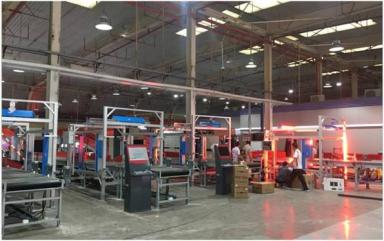What is the customs inspection system? What obligations should the import and export consignee or consignor undertake in the whole process of the customs inspection system?

The customs law of the People's Republic of China establishes that the customs is the main responsibility of the state administrative organs in charge of the control over the means of entry and exit of transport, goods, handling, sending and other articles. The import and export of goods is the most critical target of customs control, and the freight logistics mode often produces smuggling, violation of regulations and other violations of discipline. In order to maintain reasonable control over import and export goods and maintain the shock power to potential violators, laws and regulations grant the customs the right to conduct on-the-spot inspection of import and export goods. Article 6 of the customs law requires: "the customs shall be able to inspect the inbound and outbound means of transport and the inbound and outbound goods and articles; Those who violate this method or other relevant laws and regulations or administrative rules can be detained."
1. Definition of inspection:
Import and export goods inspection refers to the customs to clear the customs import and export goods the consignee or consignor or the owner application content is consistent with import and export of goods and the circumstances, or to clear the goods quality, the total number, type specification, producers, such as level of new and old is consistent with the declaration documents to declare content, in accordance with the regulations on import and export goods to carry out the specific inspection of the actual concrete administrative behavior.
2. Inspection method:
On the premise of considering the control regulations, the customs shall make clear the inspection contents according to the detailed situation of the cargo application and select the relative inspection methods. The inspection methods are divided into machine inspection and manual service inspection, in which manual service inspection is divided into appearance design inspection, sampling inspection and complete inspection.
(1) except for the special inspection regulations, the customs shall give priority to the selection of mechanical inspection methods for a single type of goods, goods with typical characteristics, and goods with large bulk volume and distinctive appearance characteristics. However, not every customs are organic chemical inspection equipment on the spot, there is no mechanical inspection equipment customs only manual service inspection.
The general administration of customs issued no. 39 public notice in 2017, for all normal goods released after inspection, after inspection, the operator of the customs control site or the person responsible for the vehicle can sign on the customs cargo inspection record sheet. The customs has no limitation on the consignee or consignor or their consignor to sign for confirmation. In addition, it can adopt two methods of on-the-spot signature or post-centralized signature, and the post-centralized signature shall not be later than five working days after the machine inspection.
(2) inspection of appearance design refers to the inspection method carried out by the customs for the packaging, shipping mark and appearance of import and export goods with external characteristics visualized and easy to distinguish basic characteristics.
(3) sampling inspection means that the customs shall, in accordance with a certain proportion, choose to open and unpack a part of the goods for explicit inspection and examine the specific conditions of the goods.
(4) complete inspection refers to the customs inspection method of opening and unpacking and checking the specific situation of goods one by one.
After the inspection of the goods, the staff of the customs inspection system shall fill in the customs inspection record form and sign it by the consignee or consignor of the import and export goods on the spot.
Article 28 of the customs law of the People's Republic of China requires: "import and export goods shall be subject to the customs inspection system. The consignee of the import goods and the consignor of the import and export goods should be present when the customs inspects the goods in the system, and bear the responsibility of carrying the goods, opening and resealing the packaging of the goods.
Therefore, when the customs carries out inspection, the consignee or consignor of the import or export goods should arrive at the spot of the customs inspection system and make relevant preparations for the customs inspection system. Secondly, in the whole process of the customs inspection system, the consignee or consignor should carry the goods in accordance with the provisions of the customs, search for the goods that must be inspected, open and unpack the goods, and facilitate the customs inspection system. Finally, if the customs decides to release the goods after the inspection, the consignee or consignor can obtain the goods. If the goods cannot be released due to some reasons, the consignee or consignor should seal the goods again according to the specific situation and customs regulations. In addition, the consignee or consignor shall sign the inspection records made by the customs after the inspection.
